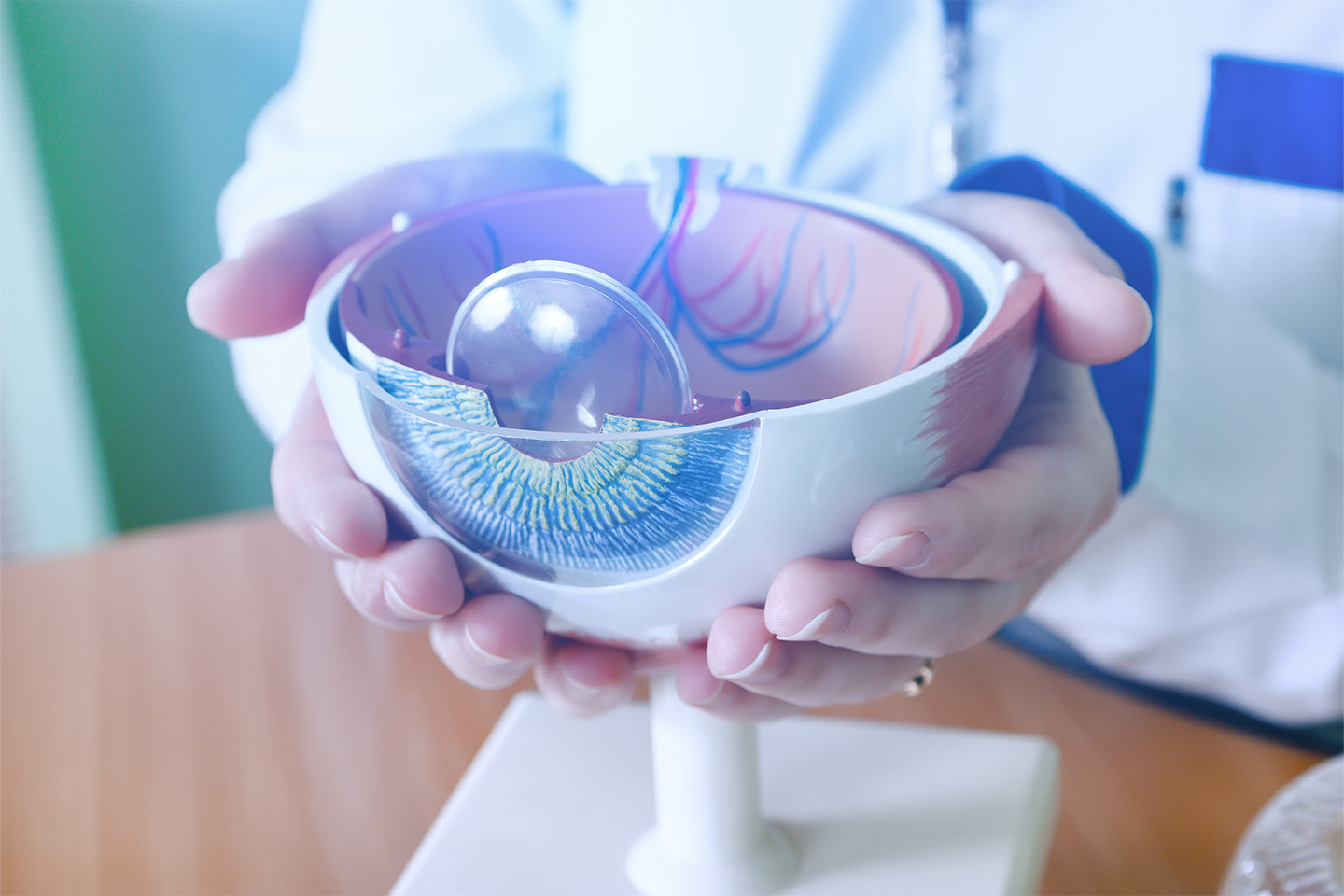How to Tell If You Have Cataracts

Cataracts develop slowly, making it incredibly important to be aware of the early signs of this common eye disorder.
Cataracts are a common age-related eye condition. In fact, by age 80, over half of all Americans have or have had cataracts. The good news is that there are safe and effective treatment options available. Below, we cover some of the most important things to know about this progressive eye disorder, including how to tell whether it’s affecting you.
What Is a Cataract?
A cataract is a clouding of the lens, the clear portion of your eye that sits behind the iris (the colored part of your eye). The lens can change shape to focus light onto your retina, the light-sensitive membrane at the back of your eye. There, the light is turned into nerve impulses that are sent to your brain.
The lens is made mostly of protein and water. When the lens tissue breaks down, the proteins clump together, forming cataracts. As a cataract grows, it can distort and discolor the light passing through the lens.
Cataracts can occur in one or both eyes, though when they occur in both, they can grow and affect vision at different rates. Most cataracts appear later in life and are often caused by routine wear and tear on the lens tissue. Other contributing factors include smoking, diabetes, obesity, excessive alcohol consumption, and exposure to sunlight.
How to Tell If You Have Cataracts
A cataract diagnosis can only be made by an ophthalmologist who has examined your eyes and your medical history. If you are experiencing any of the following symptoms of cataracts, you should visit your eyecare specialist to receive a thorough eye exam.
- Blurry vision: Cataracts block light from reaching the retina, which can cause your vision to become blurry.
- Discoloration: Cataracts cause vision to take on a yellow or brown hue. If you are having trouble identifying colors, it may be a sign of cataracts.
- Sensitivity to light: Cataracts cause light and glare to be painful.
- Decreased night vision: While they may not affect your overall vision at first, having trouble seeing at night can be an early sign of cataracts. If you are struggling to drive at night, consider driving only during the day until you can see a doctor.
- Seeing halos: Cataracts can cause lights to appear with halos or increased glare. This can contribute to difficulty with night vision.
- Double vision: If you are seeing double, it could be a symptom of cataracts or a more serious issue. See a doctor immediately.
- Temporarily improved reading vision: Certain kinds of cataracts can temporarily improve close-up (reading) vision. This will not last, unfortunately.
- Rapid increases in prescription: If you are frequently updating your glasses or contact lens prescription, it could be a result of cataracts.
What to Expect from a Doctor’s Visit for Cataracts
Once you’ve made an appointment with your ophthalmologist, they may examine and test your eyes with a variety of methods, including:
- Visual acuity test: The doctor will use an eye chart with progressively smaller letters to evaluate your eyesight.
- Pupil dilation and retinal exam: The doctor will administer eye drops to dilate (open further) the pupils (opening in the iris). Then, using a slit lamp or an ophthalmoscope, they will examine your lenses for cataracts.
- Tonometry: The doctor may use a special instrument to measure the pressure inside the eye.
How Cataract Surgery Can Help
Cataract surgery removes the clouded lens and replaces it with an artificial one. It is generally an outpatient procedure performed with local anesthetic. The healing process varies, but patients will usually achieve a full recovery within eight weeks. According to the National Eye Institute, cataract surgery is one of the most common, safe, and effective procedures in the United States, and improves patients’ vision in 90% of cases.
The experts at Kleiman Evangelista Eye Centers of Texas have 35 years of experience, and are among North Texas’ leaders in cataract surgery. If you have questions about cataracts (or any other ocular issue), contact us today to schedule a consultation.
Turn To The Top Eye Doctors In Texas
Check out one of our locations below for the best eye care near you:
[DISPLAY_ULTIMATE_SOCIAL_ICONS]








